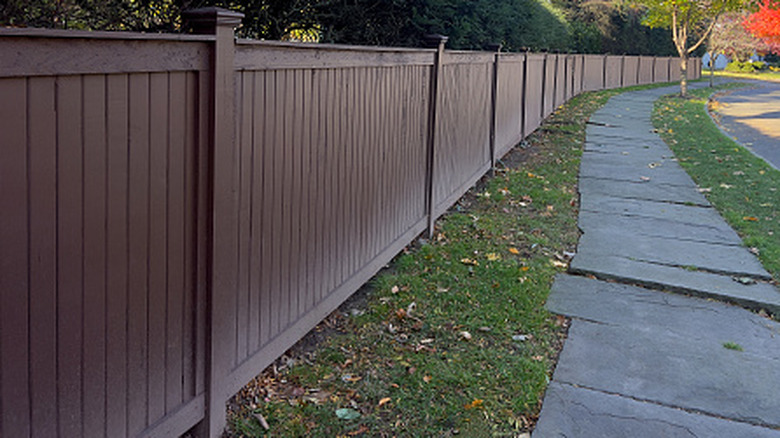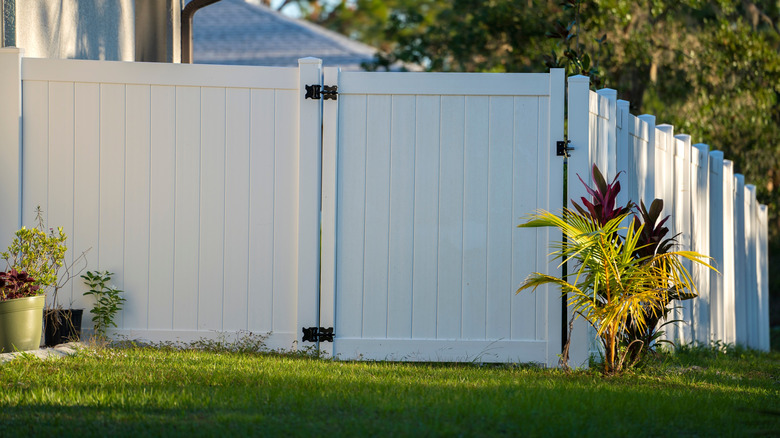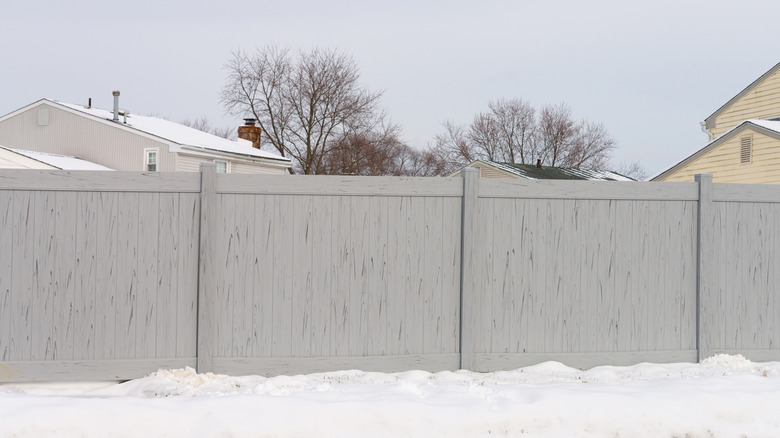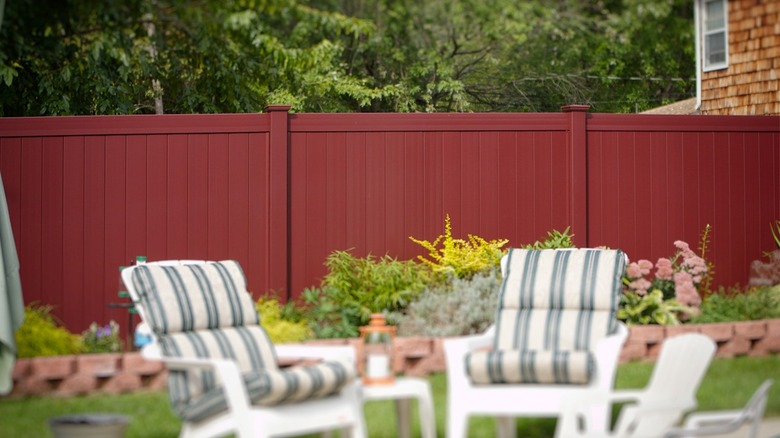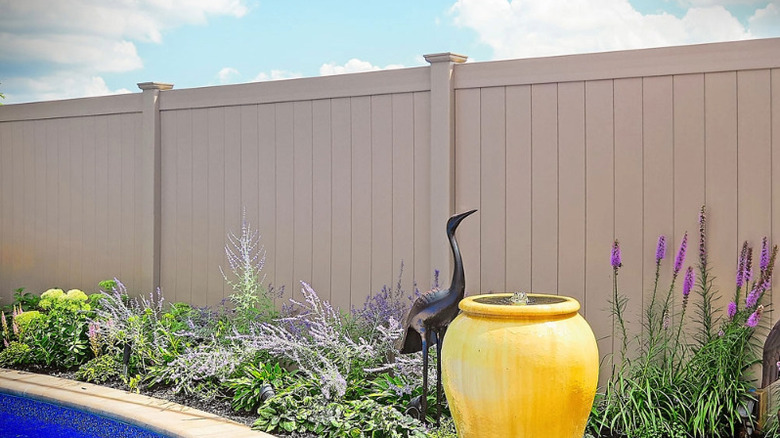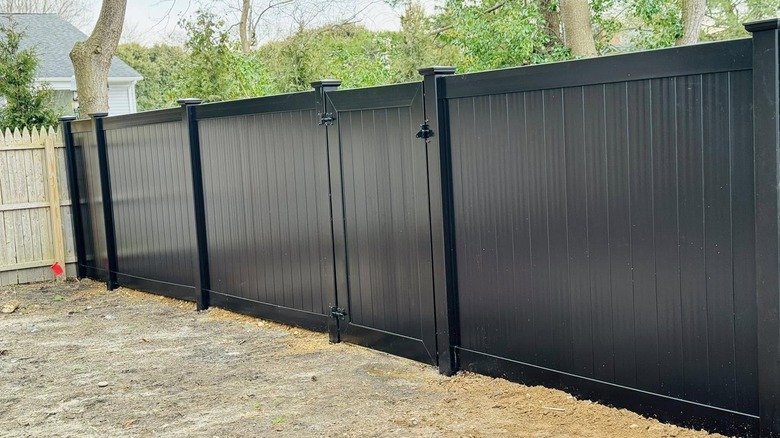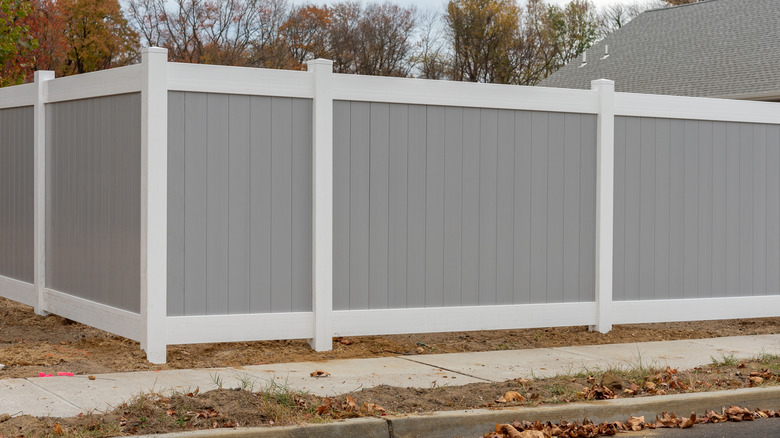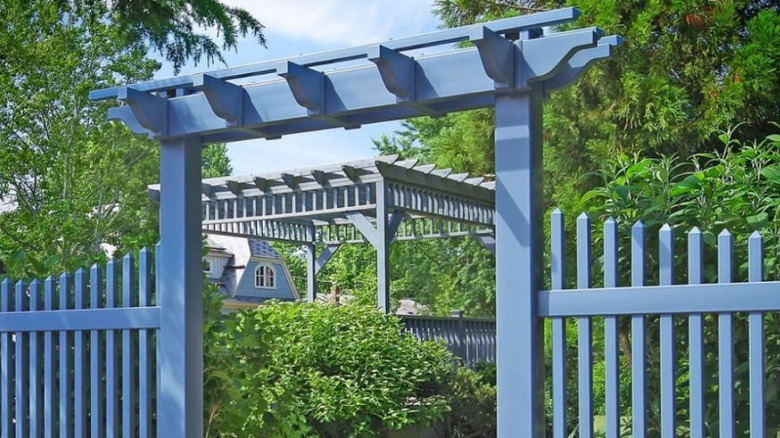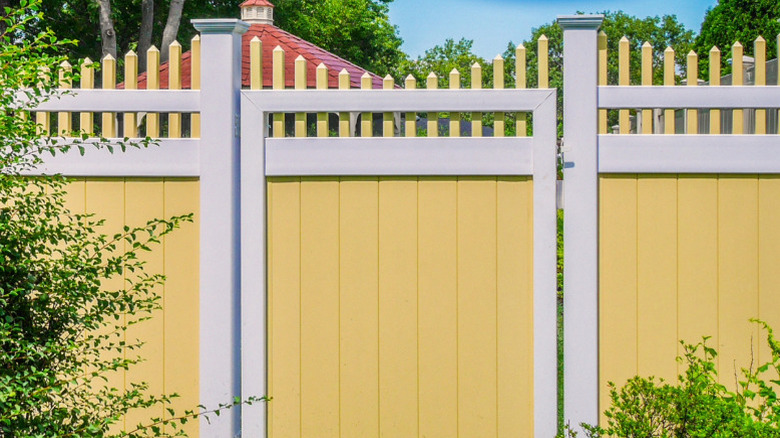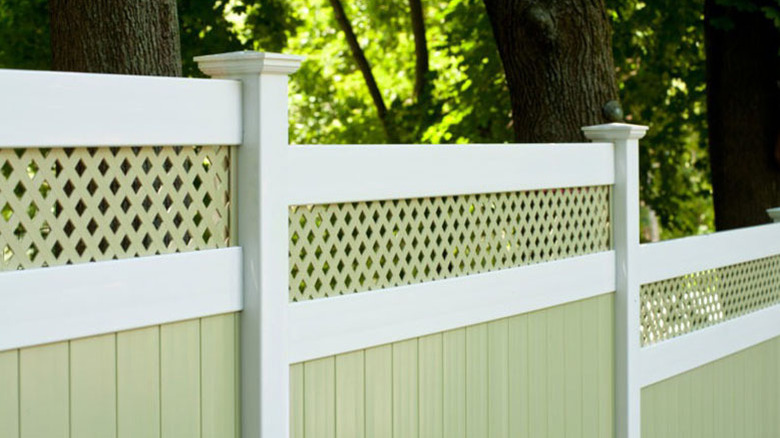10 Alternatives To Brown Vinyl Fencing
With the popularity of the earthy, natural hues associated with wooden fences, homeowners who prefer vinyl fencing often choose brown to mimic this look. Vinyl offers many benefits that other materials don't, including minimal maintenance requirements and a wider variety of colors. If you plan to boost your curb appeal on a budget with a DIY vinyl fence installation, brown can certainly blend well with the green grass, trees, and plants surrounding a home, but there are many alternative colors that can do the same. If you just want your vinyl fence to stand out in your neighborhood or want a more unique color, there are options for that, too. From light to cool to warm colors, there's a shade to match every preference and complement every house's exterior color scheme.
Unsure of which color to choose for your vinyl fence? In addition to simply narrowing your search to the ones you like the best, factor in the style of your home and yard, including any landscaping you have. You should also keep the advantages and disadvantages of certain shades in mind. For example, dirt will be more visible on a white or light-colored fence, resulting in more frequent cleaning than a darker fence would require. Vinyl fencing comes in a variety of colors, but you can also change the color of your vinyl fence if you already have one installed.
White
As one of the most popular selections for vinyl fences, the color white can create a classic, sophisticated look around your house and yard. It's been said that white matches with everything, so when it comes to your fence, this can certainly be a true statement. If you have plants near the perimeter, the dark green will contrast well against the white backdrop behind them, allowing you to see more detail from afar.
Gray
Gray is a unique and versatile color in that it can blend with other colors and still be considered a shade of gray. For example, you might go with a purple-gray or blue-gray for something a little more interesting but still ultimately neutral. Alternatively, choosing charcoal gray is an excellent way to achieve a bold dark look without committing to black. Any shade of gray allows the other colors surrounding your vinyl fence to pop, bringing perfect harmony to your property.
Red
Whether it's on a stop sign, traffic light, or a fire truck, red has always been a vibrant, in-your-face color. It gets your attention and makes you want to take a second look. In the vinyl fencing world, you'll find mostly darker shades of red like mahogany or burgundy, all of which will complement your green grass. Choose this color if you want to make a bold, intentional statement with your fence.
Beige
Beige, cream, ivory, egg shell — regardless of what you call it, this neutral hue is the perfect option for anyone who doesn't fancy flat white, but still wants a fence that creates a tranquil aura. This shade compares to the popular Benjamin Moore off-white paint color alternative to crisp white in that it offers brightness with just the right amount of warmth to a surface. Because it's an earthy color, beige will blend well with all the other outdoor colors.
Dark green
While it may seem odd to select a fence color that's so similar to that of the ground beneath it, green can create a fun, rainforest-like vibe around your home. Depending on the shade you get and the species of grass you have, the fence just might blend in perfectly with your lawn. Green represents a number of positive things, including peace and harmony, so you might find yourself feeling more relaxed when you spend time in your yard near your green fence.
Black
If every fence color seems too bright to you or you're just a fan of the sleekness that darker shades offer, a black vinyl fence can check all the boxes of what you're seeking. The tenebrosity creates a reflective quality and alluring, polished finish like a freshly washed limousine. One factor to consider, though, before choosing this color is that a black fence will absorb more heat than lighter-colored ones, which can lead to degradation, discoloration, and other unwanted changes.
Dual colors
Can't decide on only one color? Why not pick two? A two-colored vinyl fence is sure to draw compliments by your neighbors and passersby, especially if you choose two neutral colors. Choose between white and tan, charcoal and white, beige and dark brown, gray and white, black and tan, cream and tan, and other combos. The chic duality can give your fence character and invigorate your yard, house, and entire lot.
Blue
When you think of the planet Earth, blue is probably one of the first colors that comes to mind, but blue isn't actually very common in nature. So why not add it to your yard with a blue vinyl fence? You can find a muted blue-gray shade or go with the option of a bold blue or turquoise fence. It will certainly pop against all the other colors in your yard.
Yellow
A soft yellow vinyl fence can mimic the appearance of a new pine fence, especially if it's a wood grain vinyl fence. It provides all the same aesthetic benefits as a cream or beige-colored fence, but with a little more warmth. If you want even more warmth, consider a darker yellow that's more comparable to honey. Regardless of which shade you choose, yellow is also a great selection for a two-colored fence, since it pairs well with darker and lighter shades.
Light green
If you love green, but want a more subtle shade than dark, jungle green, consider a lighter hue, like mint instead. This soft, cool color pairs well with pastel home aesthetics or a fence with white posts. You'll find various shades of light green to match your personal preferences while still giving your yard a distinctive appearance.
